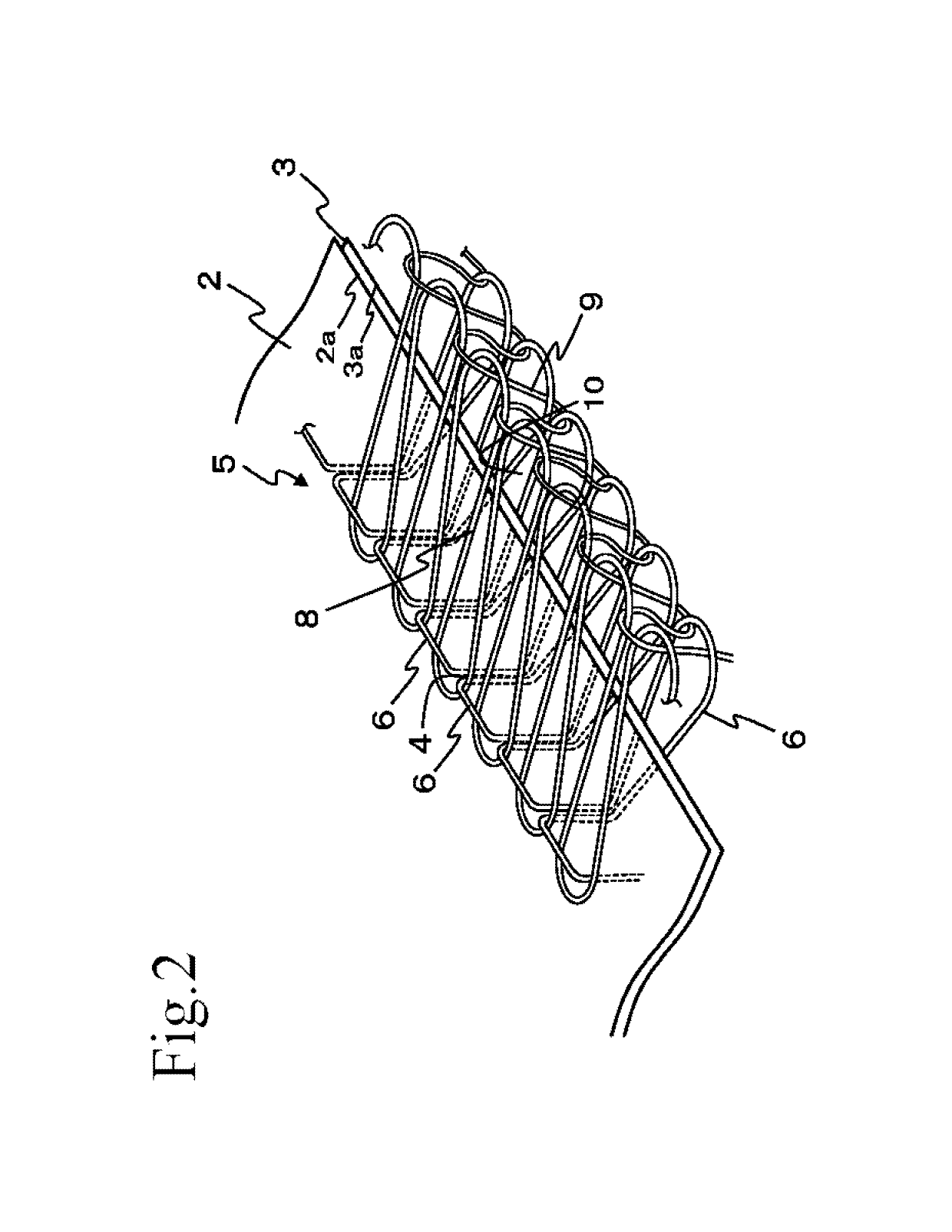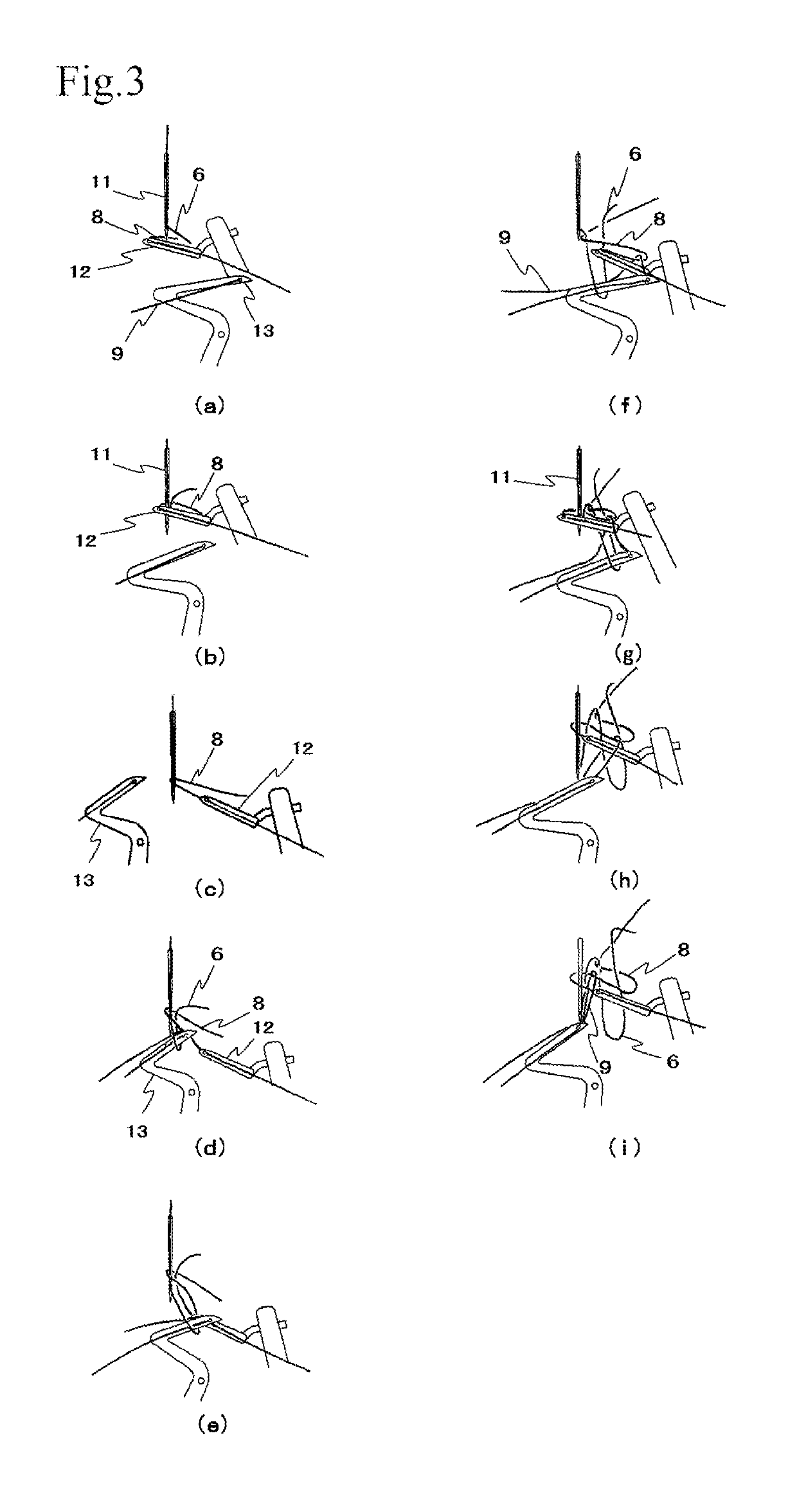Seam structure for fabric
a fabric and seam technology, applied in the direction of sewing stitches, textiles and paper, sewing apparatus, etc., can solve the problems of irritating skin, poor sewn-on portion resulting from such sewing by the overlock sewing machine, and exposed edges of fabric pieces, so as to achieve effective reduction of discomfort and aesthetics, and easy movement
- Summary
- Abstract
- Description
- Claims
- Application Information
AI Technical Summary
Benefits of technology
Problems solved by technology
Method used
Image
Examples
Embodiment Construction
[0028]The seam structure for fabric and sewing method of the present invention will be explained next with reference to accompanying drawings.
[0029]The seam structure for fabric of the present invention is a seam structure for fabric (1) in which edges (2a, 3a) of two pieces of fabric (2, 3) are joined to each other in a state where latter are connected to each other, as illustrated in FIG. 1(a), wherein: on the upper face of one piece of fabric (2) there extends, along the edge (2a) of the fabric, a stitch (5) that is formed as a result of a part of a needle thread (6) passing through the fabric to reach a lower face thereof through stitch holes (4) that are provided at regular intervals; on the upper face of the other piece of fabric (3) there are arrayed, along an edge (3a) of the fabric, a plurality of rings (7) that are formed as a result of protrusion of an annular leading end of the needle thread (6) having passed through the stitch holes (4) of the one piece of fabric (2) an...
PUM
| Property | Measurement | Unit |
|---|---|---|
| distance | aaaaa | aaaaa |
| tension | aaaaa | aaaaa |
| seam structure | aaaaa | aaaaa |
Abstract
Description
Claims
Application Information
 Login to View More
Login to View More - R&D
- Intellectual Property
- Life Sciences
- Materials
- Tech Scout
- Unparalleled Data Quality
- Higher Quality Content
- 60% Fewer Hallucinations
Browse by: Latest US Patents, China's latest patents, Technical Efficacy Thesaurus, Application Domain, Technology Topic, Popular Technical Reports.
© 2025 PatSnap. All rights reserved.Legal|Privacy policy|Modern Slavery Act Transparency Statement|Sitemap|About US| Contact US: help@patsnap.com



